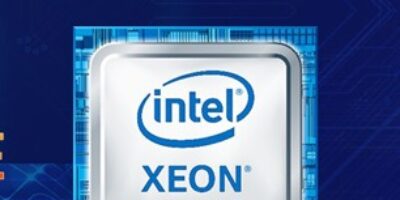Intel announces two member of its Xeon processor portfolio. The Cascade Lake advanced performance processor is expected to be released the first half of 2019 and the Intel Xeon E-2100 processor for entry-level servers is available now.
Cascade Lake represents a new class of Intel Xeon Scalable processors designed for the most demanding high-performance computing (HPC), artificial intelligence (AI) and infrastructure-as-a-service (IaaS) workloads. The processor incorporates a performance optimised multi-chip package to deliver up to 48 cores per CPU and 12 DDR4 memory channels per socket.
Cascade Lake advanced performance processors will deliver both core CPU performance gains and leadership in memory bandwidth constrained workloads, promises Intel. Performance estimates include Linpack up to 1.21x versus Intel Xeon Scalable 8180 processor and 3.4×2 versus AMD EPYC 7601; Stream Triad up to 1.83x versus Intel Scalable 8180 processor and 1.3×2 versus AMD EPYC 7601;
AI/deep learning inference up to 17x images-per-second versus Intel Xeon Platinum processor at launch.
Intel SGX on the Intel Xeon E-2100 processor family delivers hardware-based security to secure customer data and applications. This feature allows new entry-level servers featuring an Intel Xeon E-2100 processor to provide an additional layer of hardware-enhanced security measures when used with properly enabled cloud applications.
The Xeon E-2100 processor is targeted at small- and medium-size businesses and cloud service providers. It supports workloads suitable for entry-level servers as well as any computing applications requiring enhanced data protection for sensitive workloads.
The Intel Xeon E-2100 processor-based servers will support the latest file-sharing, storage and backup, virtualisation, and employee productivity solutions.
This news story is brought to you by softei.com, the specialist site dedicated to delivering information about what’s new in the electronics industry, with daily news updates, new products and industry news.
To stay up-to-date, register to receive our weekly newsletters and keep informed of the latest technology news and new products from around the globe. Simply click this link to register here: softei.com
Readers can also register to receive the monthly newsletter from our sister site, weartechdesign.com. This is the only website dedicated to developers of wearable electronic products. Simply click this link to register: weartechdesign.com
We have a Fitbit to give away on both Softei.com and Weartechdesign.com! Register today to enter the competition to win a Fitbit at softei.com or weartechdesign.com.






